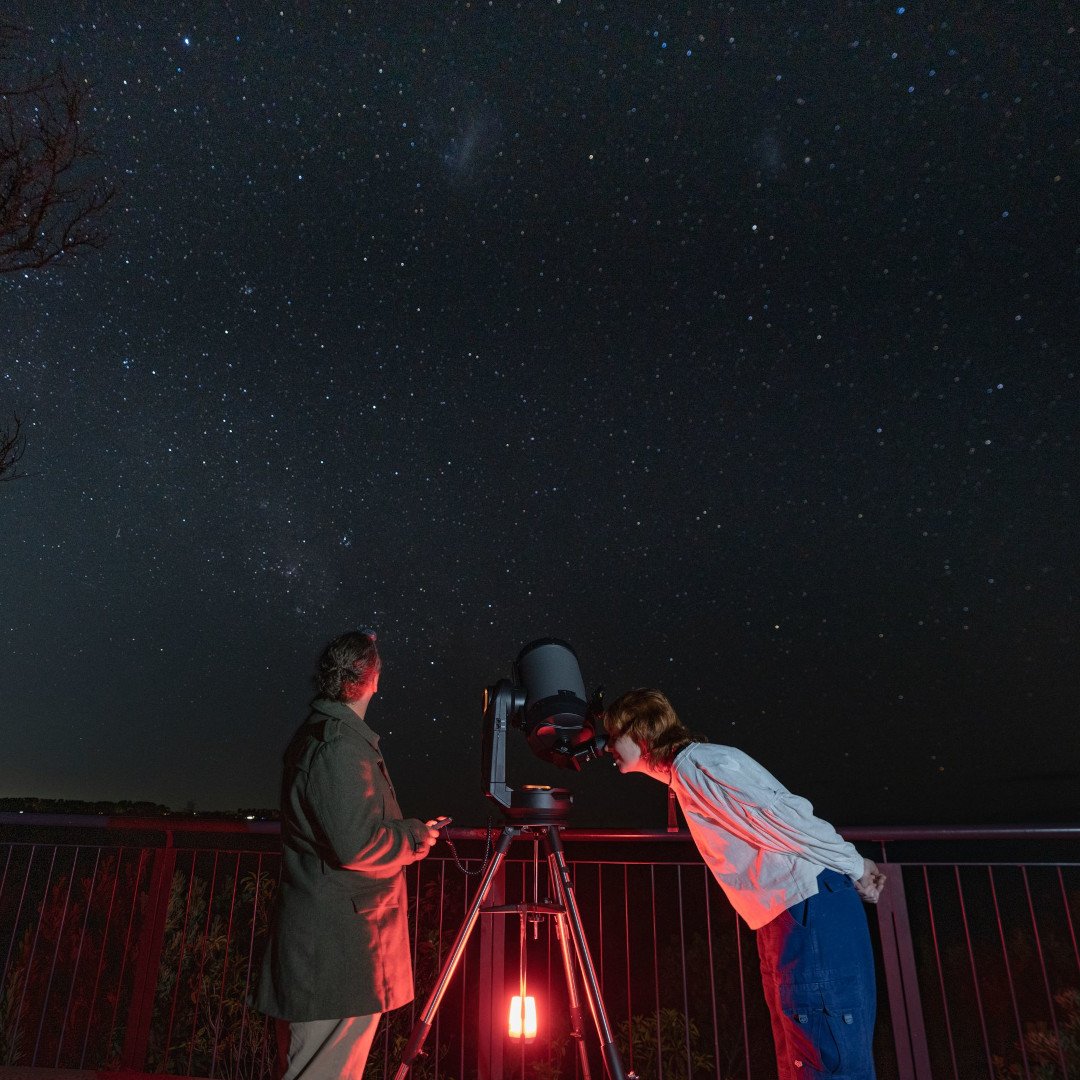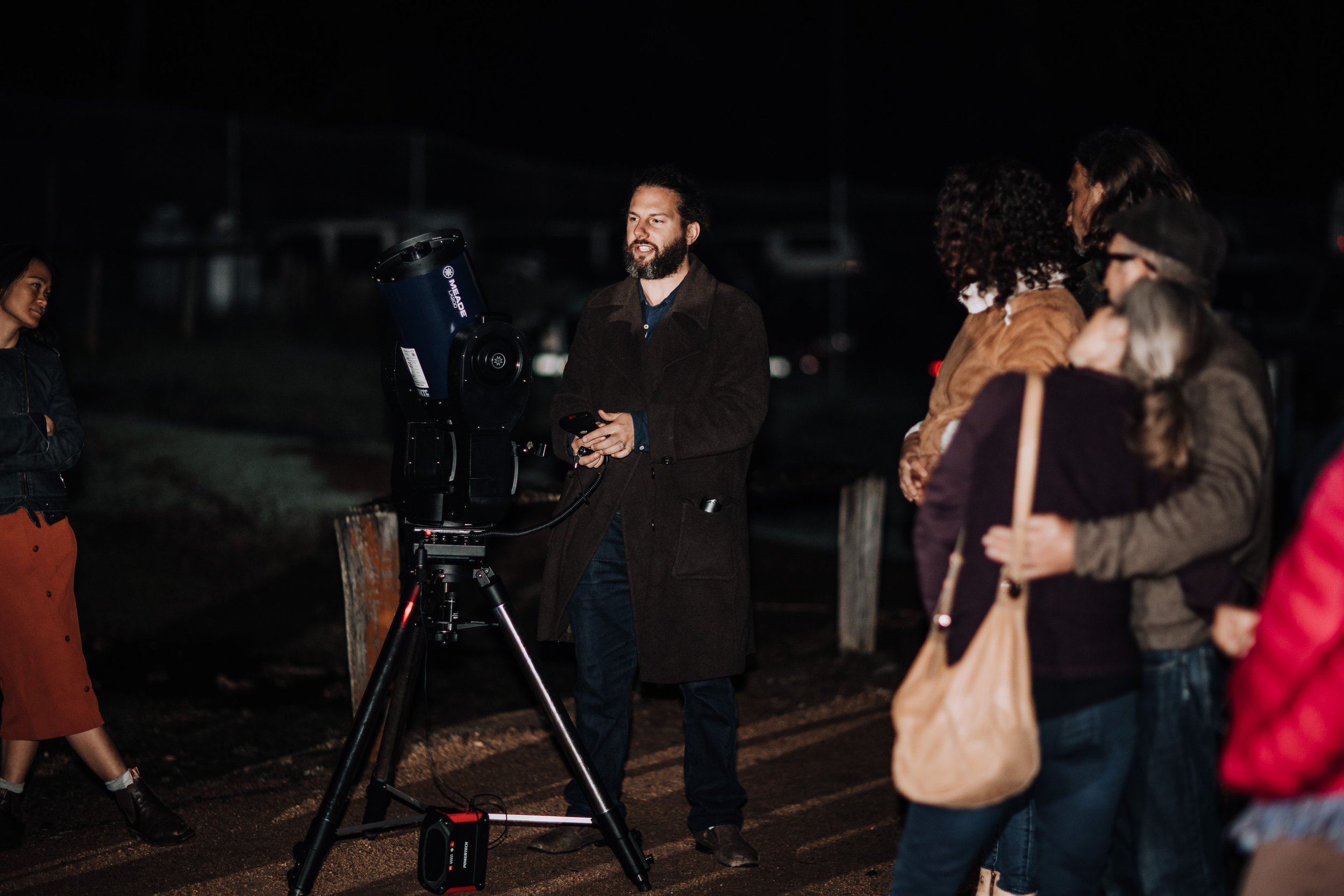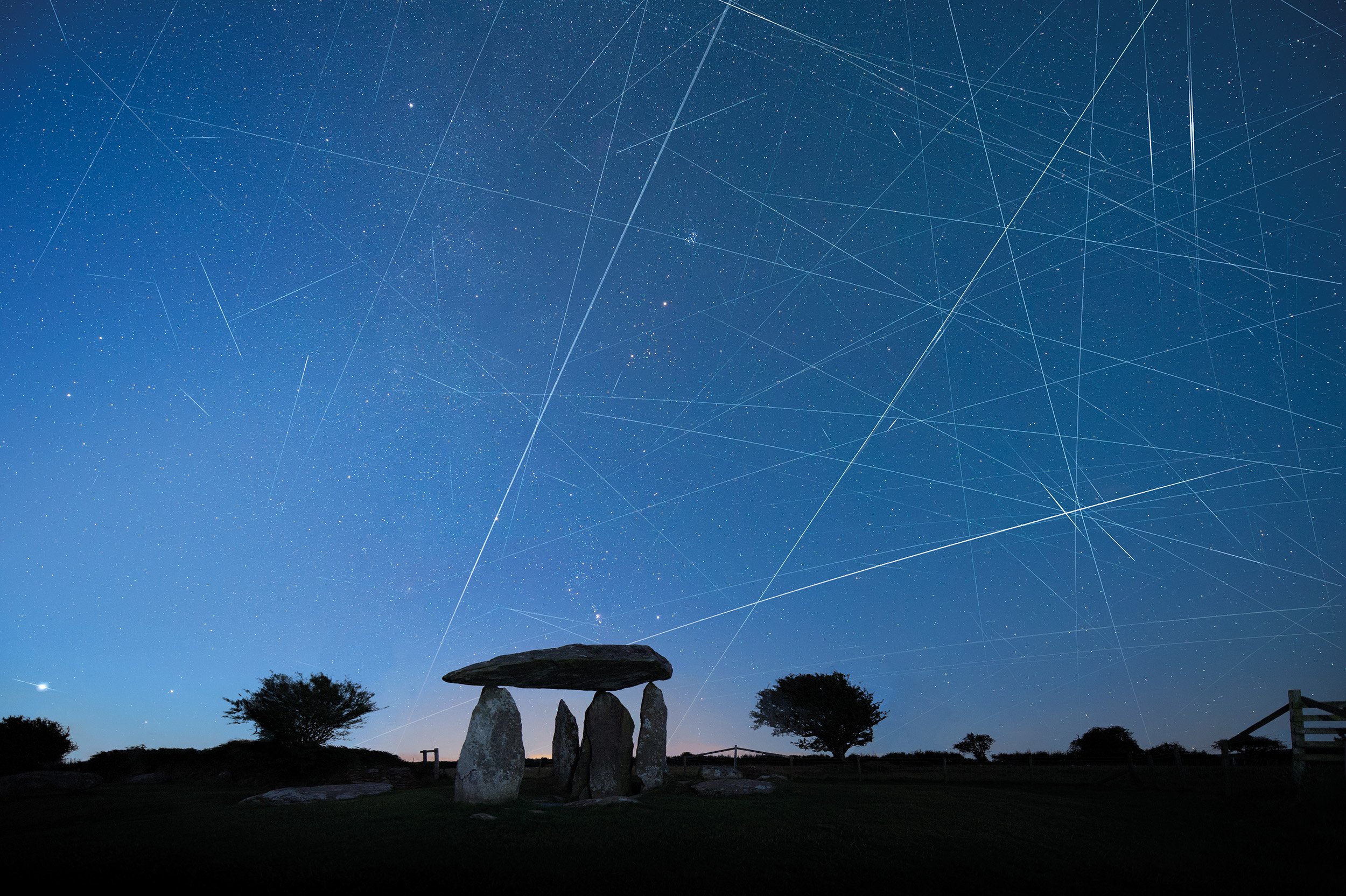
Astronomy
Stargazing
-
Cultural Astronomy
-
Dark Sky Preservation
-
Astrophysics
STARGAZING
Dimitri is the proud co-founder of Blue Mountains Stargazing, Jervis Bay Stargazing and Byron Bay Stargazing.
With more than 12 years of experience as an astronomy guide accounting for more than 1000 stargazing tours, Dimitri is currently delivering the stargazing tours in Jervis Bay.
CULTURAL ASTRONOMY
Cultural Astronomy is an emerging science that blends archaeology, ethnography, history and astronomy. It investigates the connection that various cultures around the world entertain with the Sky.
Dimitri works in Cultural Astronomy research as an Adjunct Fellow at Western Sydney University. He is a member of the Commission C5 “Cultural Astronomy” of the International Astronomical Union.
Australian Rock Art and Indigenous Astronomy
The Sydney Basin is one of the regions with the most rock art in the world. Australian Aboriginal peoples have many stories about “Sky Country”. How much of these sky stories are found in the sandstone surrounding Sydney and the Blue Mountains?
Waiting for upcoming publications about astronomy and the Sydney rock art, you can consult the 3D models of various interesting sites.

“When we look at the ground, we only see our differences.
When we look up into the Sky, we go back to being children. Amazed. Fascinated. We feel united.”
— Dimitri Douchin
Photo Credit: Thomas Kirkpatrick
DARK SKY PRESERVATION
Dimitri is a proud co-founder of the Blue Mountains Dark Sky Initiative, a council-community led initiative aimed at making the Blue Mountains a certified International Dark Sky Place.
He is also involved in the making of two dark sky reserves in the Australian outback and a member of Dark Sky International and the Australasian Dark Sky Alliance.

THE ISSUE OF SKY BRIGHTENING
The current 10 000 satellites that are flying above the Earth have brightened the dark of the night by 10%.
60 000 satellites are planned to be launched in the next decade and 1 million satellites have been registered to launch in the next 20 years.
Whole sky brightening due to space light pollution is one of the problems that humanity will face in the next 20 years.
As the night sky brightens, we lose the sight of the faintest stars and subtle objects like the Milky Way and the Magellanic Clouds. This form of light pollution remains as long as the satellites and the space debris they cause stay in the Sky.
Photo Credit: Max Alexender
This is impacting directly humanity’s access to the Sky, affecting astronomers in their profession, Indigenous people and their sky lore, as well migratory birds relying on stars for orientation, and every single human who ever wants to marvel at the stars above.
To date there is no clear technical, legal, ethical solution existing to remedy this unforeseen issue. If we want our children to be able to see the Milky Way, the time to act is now.
Dimitri is looking for a solution to this pressing and somehow underrepresented issue as a member of the International Astronomical Union Centre for the Protection of Dark and Quiet Skies.
LIST OF ASTROPHYSICS RESEARCH PUBLICATIONS
Gemini Observatory image of Kronberger 61 (K 61) showing the ionized shell of expelled gas resembling a soccer ball. The astronomical nature of the planetary nebula was confirmed by Dimitri and his PhD supervisor Orsola De Marco during his PhD research observations.
As First Author
The binary fraction of planetary nebula central stars – II. A larger sample and improved technique for the infrared excess search
D. Douchin, et al.; Monthly Notices of the Royal Astronomical Society, Volume 448, Issue 4, 21 April 2015, p.3132–3155,
DOI: https://doi.org/10.1093/mnras/stu2700
Estimating the binary fraction of central stars of planetary nebulae using the infrared excess method
D. Douchin et al., Asymmetrical Planetary Nebulae VI conference, March 2014, http://www.astroscu.unam.mx/apn6/PROCEEDINGS/
Searching for binary central stars of planetary nebulae with Kepler
D. Douchin, et al., Volume 7, Symposium S283 (Planetary Nebulae: An Eye to the Future) July 2011, pp. 344-345. Published online by Cambridge University Press: 30 August 2012
DOI: https://doi.org/10.1017/S1743921312011349
Estimating the binary fraction of planetary nebulae central stars
D. Douchin et al., Volume 7, Symposium S283 (Planetary Nebulae: An Eye to the Future) July 2011, pp. 346-347, Published online by Cambridge University Press: 30 August 2012
DOI: https://doi.org/10.1017/S1743921312011350
Planetary Nebulae: Getting Closer to an Unbiased Binary Fraction
D. Douchin, et al.; SF2A 2012 Proceedings; Société Francaise d’Astronomie et d’Astrophysique (SF2A), 25 October 2012, pp.237-242, arXiv:1210.6865
Testing the binary hypothesis for the formation and shaping of planetary nebulae
D. Douchin et. al, EUROWD12 Conference Proceedings, 23 October 2012, arXiv:1210.6226
PhD Thesis
Estimating the Binary Fraction of Central Stars of Planetary Nebulae
Macquarie University, Université de Montpellier 2, 2015
https://figshare.mq.edu.au/articles/thesis/Estimating_the_binary_fraction_of_central_stars_of_planetary_nebulae/19439987?file=34538915
As Collaborator
The planetary nebula Abell 48 and its [WN] nucleus
Frew, et al., Monthly Notices of the Royal Astronomical Society, Volume 440, Issue 2, 11 May 2014, pp. 1345–1364, https://doi.org/10.1093/mnras/stu198
Extending the planetary mass function to Earth mass by microlensing at moderately high magnification
Abe, et al., Monthly Notices of the Royal Astronomical Society, Volume 431, Issue 4, 1 June 2013, pp. 2975–2985, https://doi.org/10.1093/mnras/stt318
Estimating the binary fraction of planetary nebulae central stars
Marco et al.,Proceedings of the International Astronomical Union · August 2012
https://www.researchgate.net/publication/258559668_The_Binary_Fraction_of_Central_Stars_of_Planetary_Nebulae
New faint planetary nebulae from the DSS and SDSS
Kronberger et al., Proceedings of the International Astronomical Union 7(S283):414-415, August 2012, Planetary Nebulae: An Eye to the Future
DOI: 10.1017/S1743921312011696
Do Most Planetary Nebulae Derive from Binary Interactions?The Binary Fraction of Central Stars of Planetary Nebulae
De Marco et al., American Astronomical Society, AAS Meeting #219, #418.01, January 2012
https://www.researchgate.net/publication/258562290_Do_Most_Planetary_Nebulae_Derive_from_Binary_Interactions_The_Binary_Fraction_of_Central_Stars_of_Planetary_Nebulae
Binary Microlensing Event Ogle-2009-blg-020 Gives Verifiable Mass, Distance, And Orbit Predictions
J. Skowronet al., The American Astronomical Society. The Astrophysical Journal, Volume 738, Number 1, 16 August 2011,
DOI: 10.1088/0004-637X/738/1/87
MOA-2009-BLG-387Lb: a massive planet orbiting an M dwarf
Batista et al., Astronomy and Astrophysics 529:102, May 2011
DOI: 10.1051/0004-6361/201016111
Sub-saturn Mass Planet, Moa-2009-blg-319lb
Miyake et al., 28 January 2011
DOI: 10.1088/0004-637X/728/2/120
Frequency of Solar-like Systems and of Ice and Gas Giants Beyond the Snow Line from High-magnification Microlensing Events in 2005-2008
The Astrophysical Journal 720(2):1073, August 2010
DOI: 10.1088/0004-637X/720/2/1073












